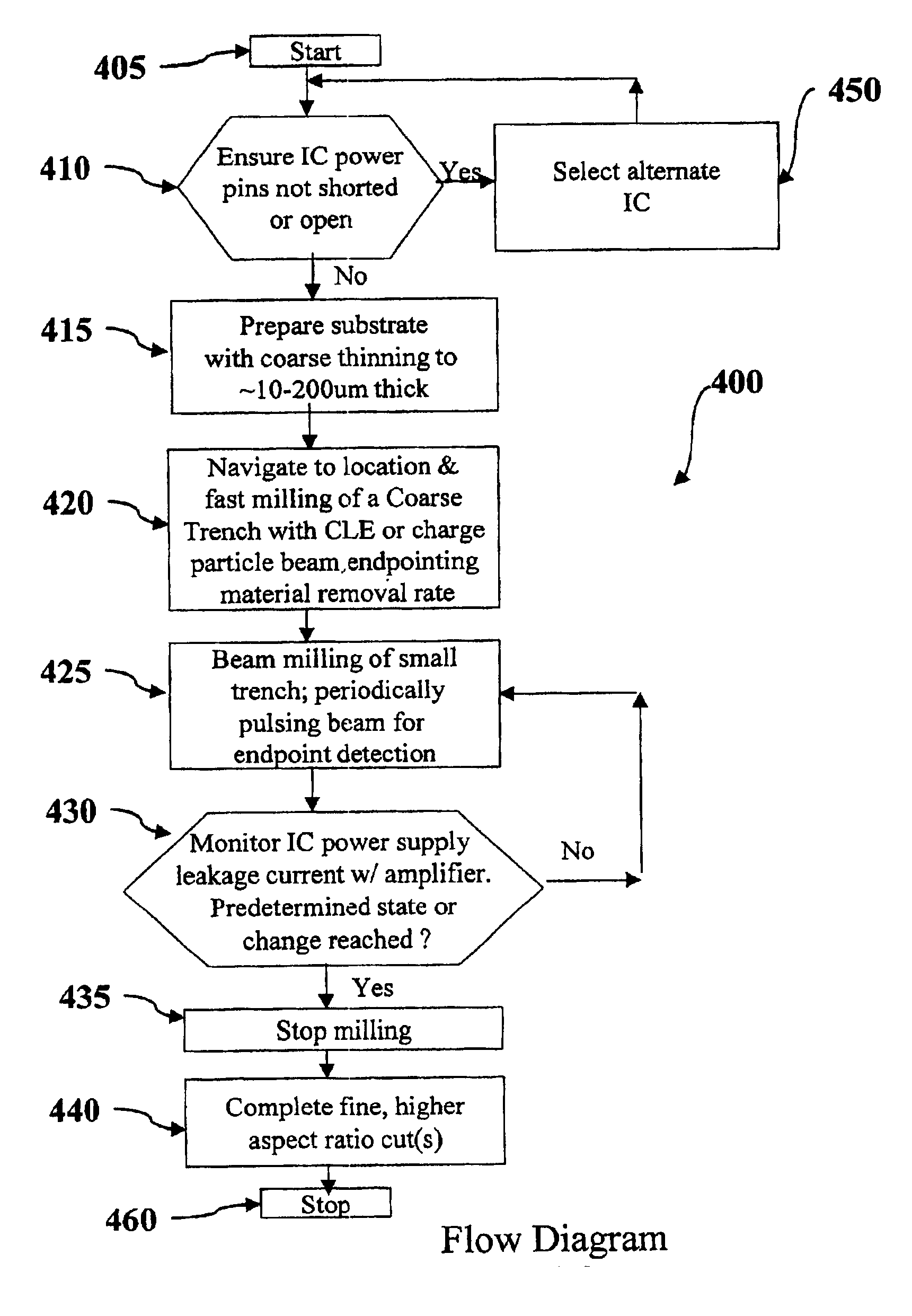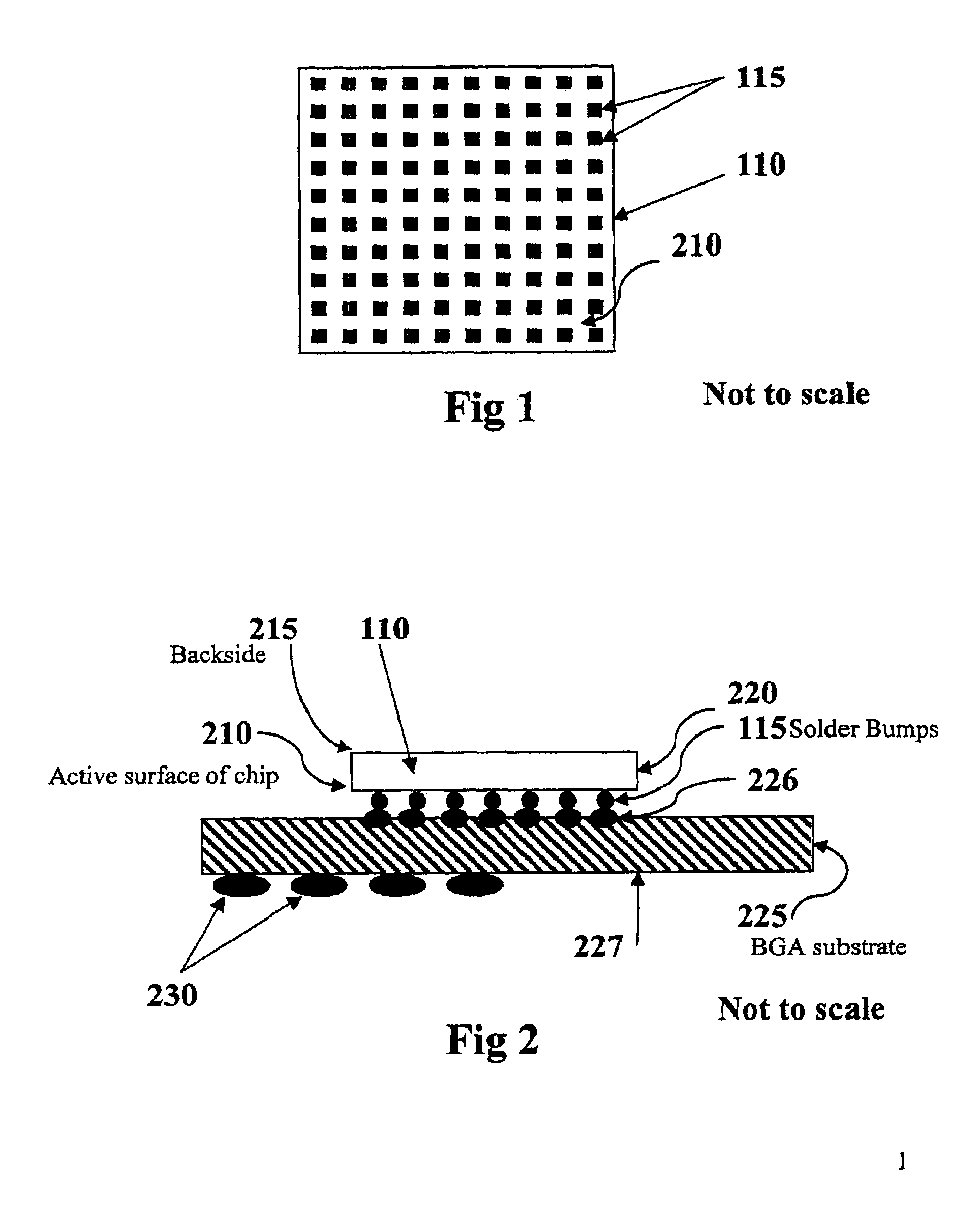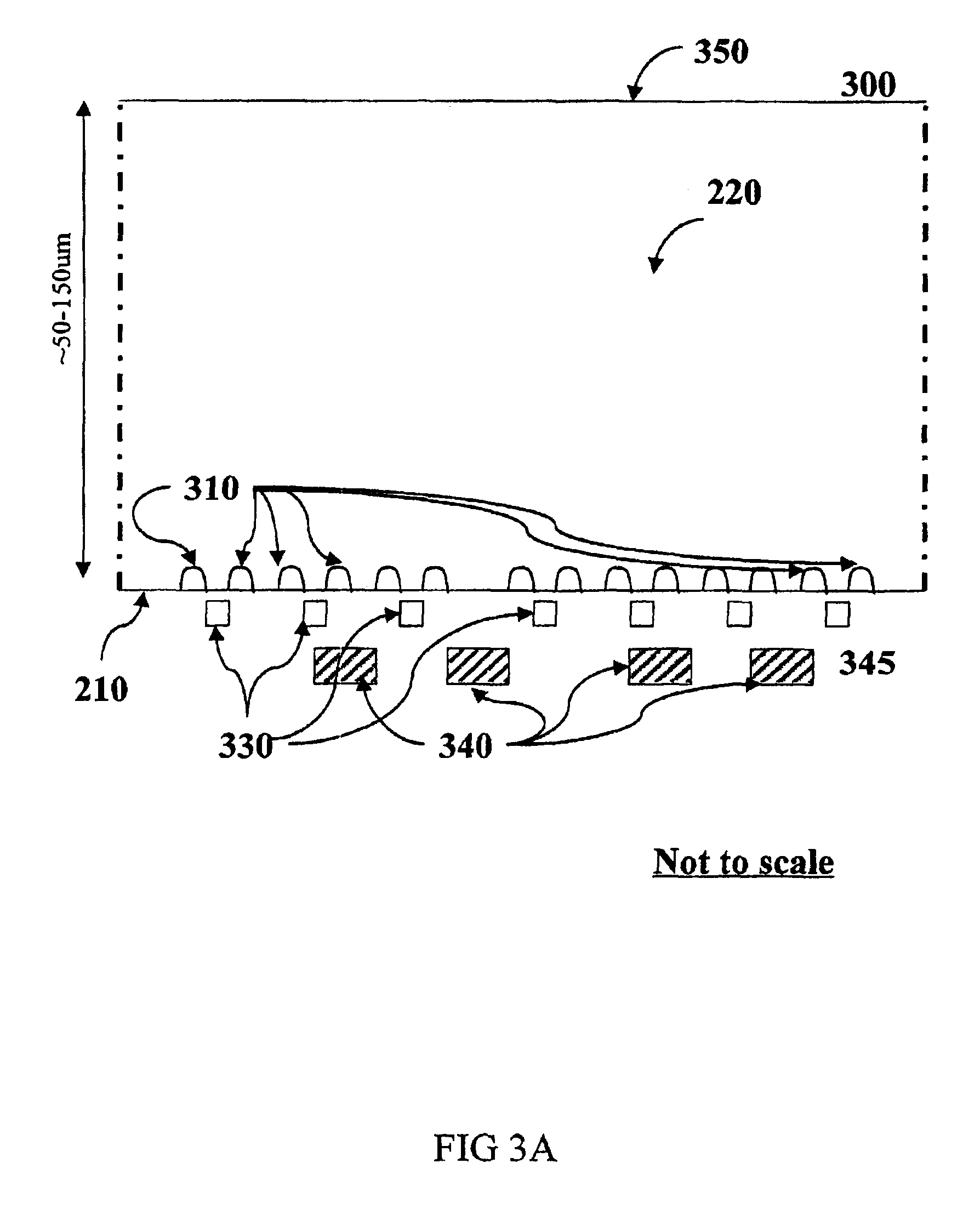Precise, in-situ endpoint detection for charged particle beam processing
a technology charged particle, which is applied in the direction of fluid pressure measurement, instruments, vacuum gauges, etc., can solve the problems of affecting the accuracy of in-situ endpoint detection,
- Summary
- Abstract
- Description
- Claims
- Application Information
AI Technical Summary
Benefits of technology
Problems solved by technology
Method used
Image
Examples
Embodiment Construction
[0043]In the following detailed description of the preferred embodiments and other embodiments of the invention, reference is made to the accompanying drawings. It is to be understood that those skilled in the art will readily see that other embodiments and changes may be made without departing from the scope of the invention.
[0044]FIG. 1 depicts a schematic view of an IC 110 designed to be flipchip mounted. The top or active surface 210 of the IC 110 is covered with solder bumps 115. During the packaging process these solder bumps 115 are soldered directly to a similar array of pads or bumps 226 on the package substrate. Because much of the active surface 210 of the IC 110 is covered with the solder bumps 115, access to the circuit elements below (not shown) is limited for probing and modification. In addition, in order to perform at-speed analysis, it is usually required to take advantage of the high speed interconnection provided by the flipchip package substrate to electrically ...
PUM
| Property | Measurement | Unit |
|---|---|---|
| thickness | aaaaa | aaaaa |
| thickness | aaaaa | aaaaa |
| thickness | aaaaa | aaaaa |
Abstract
Description
Claims
Application Information
 Login to View More
Login to View More - R&D
- Intellectual Property
- Life Sciences
- Materials
- Tech Scout
- Unparalleled Data Quality
- Higher Quality Content
- 60% Fewer Hallucinations
Browse by: Latest US Patents, China's latest patents, Technical Efficacy Thesaurus, Application Domain, Technology Topic, Popular Technical Reports.
© 2025 PatSnap. All rights reserved.Legal|Privacy policy|Modern Slavery Act Transparency Statement|Sitemap|About US| Contact US: help@patsnap.com



